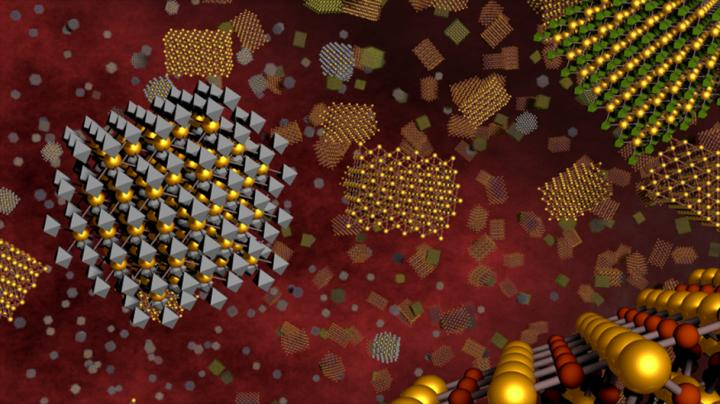Jan 3 2020
An innovative “multi-messenger” approach to quantum physics developed by scientists from Columbia University and the University of California, San Diego, denotes a technological advance in ways researchers can study quantum materials.
 The discovery of multi-messenger nanoprobes allows scientists to simultaneously probe multiple properties of quantum materials at nanometer-scale spatial resolutions. Image Credit: Ella Maru Studio.
The discovery of multi-messenger nanoprobes allows scientists to simultaneously probe multiple properties of quantum materials at nanometer-scale spatial resolutions. Image Credit: Ella Maru Studio.
The study outcomes have been reported in an article published recently in Nature Materials. The study was led by A. S. McLeod, postdoctoral researcher, Columbia Nano Initiative, along with co-authors Dmitri Basov and A. J. Millis from Columbia University and R.A. Averitt from UC San Diego.
We have brought a technique from the inter-galactic scale down to the realm of the ultra-small. Equipped with multi-modal nanoscience tools we can now routinely go places no one thought would be possible as recently as five years ago.
Dmitri Basov, Higgins Professor of Physics and Director of Energy Frontier Research Center, Columbia University
The study was motivated by “multi-messenger” astrophysics, which was a groundbreaking method that emerged in the past decade to explore distant phenomena such as black hole mergers. When taken together, simultaneous measurements using instruments such as X-ray optical, infrared, and gravitational wave telescopes can offer a physical picture greater compared to the sum of their individual parts.
Researchers have been looking for new materials with the potential to supplement the existing dependence on electronic semiconductors. Gaining control over properties of materials using light can pave the way for enhanced functionality, energy efficiency, flexibility, and speed for future computing platforms.
Experimental studies on quantum materials have usually described results achieved using just one type of spectroscopy. The research team has unraveled the power of making use of a blend of measurement methods for the simultaneous analysis of optical and electrical properties.
As part of their experiment, the scientists focused laser light onto the sharp tip of a needle probe that was coated with magnetic material. Upon subjecting thin films of metal oxide to an unusual strain, ultra-fast pulses of light can activate the material to transform into an uninvestigated phase of nanometer-scale domains, where the change is reversible.
The researchers scanned the probe over their thin-film sample’s surface, thus triggering the transformation locally and simultaneously manipulating and recording the optical, electrical, and magnetic properties of these light-triggered domains at nanometer-scale precision.
The research shows how unpredicted properties can appear in long-explored quantum materials at ultra-small scales upon tuning them by strain.
It is relatively common to study these nano-phase materials with scanning probes. But this is the first time an optical nano-probe has been combined with simultaneous magnetic nano-imaging, and all at the very low temperatures where quantum materials show their merits. Now, investigation of quantum materials by multi-modal nanoscience offers a means to close the loop on programs to engineer them.
A. S. McLeod, Postdoctoral Researcher, Columbia Nano Initiative, Columbia University
The study titled “Multi-messenger nanoprobes of hidden magnetism in a strained manganite” was developed with support from Programmable Quantum Materials, an Energy Frontier Research Center financially supported by the United States Department of Energy (DOE), Office of Science and Basic Energy Sciences.